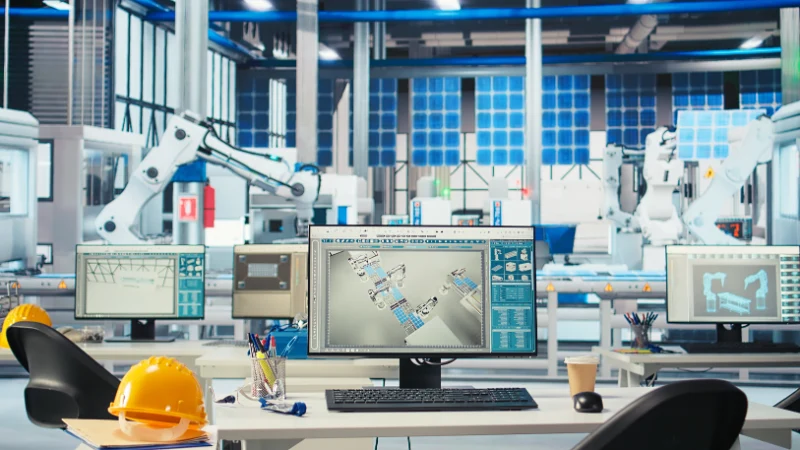In today’s data-centric landscape, artificial intelligence (AI) is reshaping the way industries operate, from healthcare and agriculture to automotive and e-commerce. One of the most powerful drivers behind this transformation is computer vision, a branch of AI that enables machines to interpret and understand visual information. By equipping machines with the ability to see and analyze, computer vision services are unlocking new levels of efficiency, accuracy, and automation in various sectors.
This article explores how computer vision is revolutionizing AI-driven industries, the technology’s core capabilities, and the growing role of human-in-the-loop systems like RLHF (Reinforcement Learning with Human Feedback).
Understanding the Role of Computer Vision in AI
Computer vision bridges the gap between digital systems and the physical world by enabling algorithms to process images and videos. With advancements in deep learning, neural networks, and data annotation techniques, computer vision systems can now detect objects, identify patterns, recognize faces, classify images, and even predict outcomes based on visual inputs.
This capability makes it a vital component of AI models that rely on accurate, real-time visual understanding. The impact is evident across industries that demand intelligent automation and decision-making based on visual cues.
Key Applications Across Industries
1. Healthcare and Medical Imaging
In medical diagnostics, computer vision algorithms are being used to analyze X-rays, MRIs, and CT scans with remarkable accuracy. These tools assist radiologists in detecting anomalies such as tumors, fractures, and infections early, enabling faster and more reliable diagnoses. Automated image analysis not only increases diagnostic speed but also reduces the likelihood of human error, especially in high-stakes environments like emergency rooms and oncology departments.
2. Agriculture and Precision Farming
Computer vision is transforming agriculture through applications like crop monitoring, pest detection, and yield prediction. Drones and field sensors equipped with visual analytics help farmers assess plant health, detect diseases early, and optimize resource allocation. With the growing demand for sustainable agriculture, computer vision helps balance yield optimization with minimal environmental impact.
3. Retail and E-commerce
In the retail industry, visual recognition tools are being deployed for inventory management, customer behavior analysis, and visual search features. E-commerce platforms, for example, use computer vision to allow users to search for products using images instead of text, enhancing the user experience and streamlining the customer journey.
4. Manufacturing and Quality Control
Computer vision enables automation in manufacturing by detecting defects, monitoring assembly lines, and ensuring consistent product quality. Visual inspection tools reduce reliance on manual labor and help maintain compliance with stringent safety and quality standards.
5. Autonomous Vehicles and Transportation
Self-driving cars rely heavily on computer vision systems to navigate safely. These systems process live video feeds to detect pedestrians, traffic signs, road markings, and other vehicles in real-time. The fusion of visual data with LiDAR and radar enhances object detection and decision-making on the road.
The Power of Annotated Data in Visual Intelligence
Behind every successful computer vision model lies vast quantities of high-quality annotated data. Data annotation involves labeling images or video frames so that AI systems can “learn” from them. Categories include bounding boxes, segmentation masks, and key points, each tailored to specific use cases.
The accuracy of these annotations directly impacts the performance of machine learning models. Industries that deploy AI at scale often rely on specialized teams or outsourcing solutions to ensure consistency and scalability in data labeling, ensuring that the resulting models meet real-world demands.
Human-in-the-Loop: Enhancing AI with RLHF
Despite rapid advances in AI, machine learning systems still struggle in complex or ambiguous scenarios. This is where human feedback becomes essential. Reinforcement Learning with Human Feedback (RLHF) is a framework that trains models using both machine learning and input from human annotators. By integrating real-time human judgment, RLHF improves the model’s ability to generalize, align with human values, and make nuanced decisions.
This technique is particularly relevant in applications where ethical considerations, contextual accuracy, or safety are critical.
Learn more about RLHF (Reinforcement Learning with Human Feedback) and its growing influence in training safer and more effective AI models.
Conclusion
Computer vision is at the heart of the AI revolution, transforming how industries operate, optimize, and innovate. From improving diagnostic accuracy in healthcare to enabling self-driving vehicles, the technology offers a wide array of applications that are shaping the future of automation and intelligence.
However, the journey from raw visual data to actionable AI insights requires not just cutting-edge algorithms, but also thoughtful integration of human feedback, ethical standards, and robust data practices.


